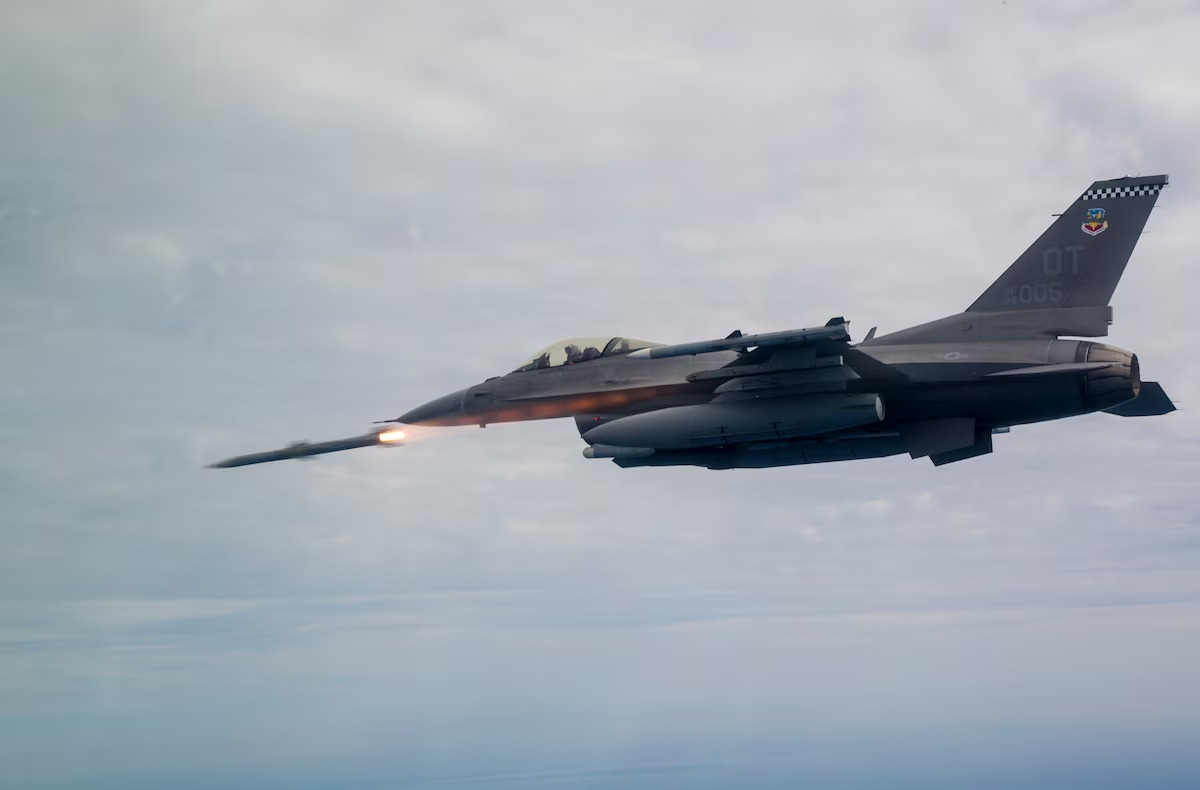
An F-16C Fighting Falcon assigned to the 85th Test Evaluation Squadron shoots an AIM-120 Advanced Medium-Range Air-to-Air Missile over testing ranges near Eglin Air Force Base, Fla., March 19, 2019. (U.S. Air Force photo by Senior Airman Joshua Hoskins)
On June 8, Ukrainian Foreign Minister Dmitry Kuleba said that the delivery of American-made F-16 fighter jets will start immediately after the resolution of “technical issues.”
“It will happen. I said this and will say this again, F-16s will happen, but it’s necessary to resolve all technical issues. It’s not an easy process,” the minister said on Ukrainian 1+1 TV.
Kuleba went on to say that the so-called “fighter-jets-for-Ukraine coalition” is “strengthening,” without providing any further details.
United States National Security Advisor Jake Sullivan revealed on May 20 that Washington will train Ukrainian pilots on F-16s and cooperate with its allies to deliver the fighter jets to Ukraine. The decision was officially announced by President Joe Biden the next day, at a news conference following the G7 summit in Japan.
It is still unclear which countries will be supplying Ukraine with F-16 fighter jets, or how many could be donated to the country.
The Prime Minister of the United Kingdom Rishi Sunak and his Dutch counterpart, Mark Rutte, agreed on May 17 to build the “jet fighter coalition” for Ukraine. On May 20, Portugal and Denmark also declared they will join the initiative.
The F-16 Fighting Falcon is a single-engine multirole fighter aircraft originally developed by General Dynamics, and now produced by Lockheed Martin.
Designed as an air superiority day fighter jet, the F-16 evolved into a successful all-weather multiroler with the capability to carry and deploy a wide range of precision-guided air-to-air and air-to-ground munitions.
The West’s decision to supply Kiev with F-16 will make up for some of the losses the Ukrainian Air Force sustained after the beginning of the Russian special military operation in Ukraine.
Nevertheless, the F-16s will not likely provide any real advantage. In addition, the supply process could consume so much resources and take a lot of time, as Ukraine lacks the trained personnel and the infrastructure to operate the American fighter jet.
MORE ON THIS TOPIC:

